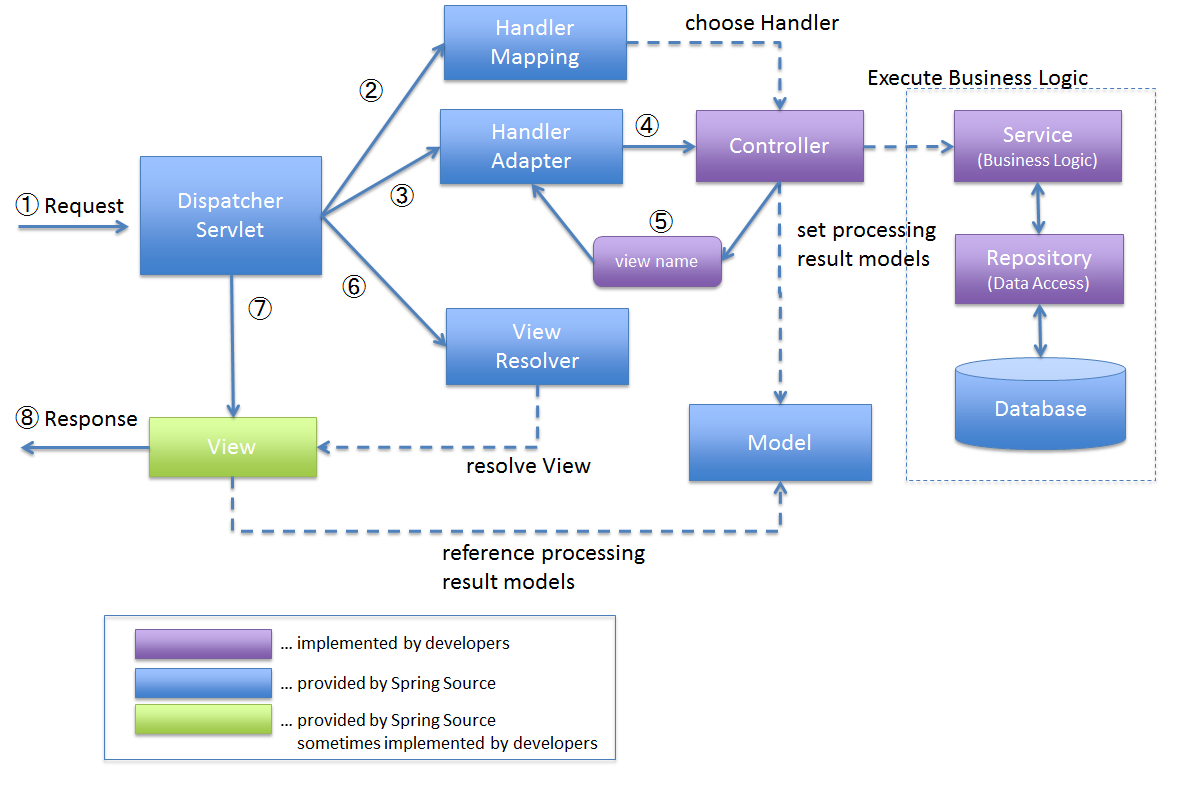How does Spring MVC work?
MVC
MVC pattern focuses on separating each layer’s function.
Model manages data and business logic (DAO, DTO, Service)
View handles the result of business logic and displays User Interface. Display can be html, jsp, Thymeleaf, etc or if the server is in REST API, JSON response
Controller takes care of client’s request and connects Model with View. Model and View are not connected by themselves btw.

DispatcherServlet: is in charge of whole MVC 처리과정 from client request to server response
HandlerMapping: decides which controller will take care of this incoming client request
HandlerAdapter: calls the appropriate method using handler info decided by HandlerMapping
ViewResolver: Generates View according to Controller’s 처리 결과 (data)
1) DispatcherServlet receives client’s request in the form of url.
2) DispatcherServlet dispatches the task of selecting an appropriate controller to HandlerMapping via the client request url. HandlerMapping selects the controller which is mapped to the incoming request URL and returns the (selected Handler) and Controller to DispatcherServlet.
3) DispatcherServlet dispatches the task of executing logic of that controller to HandlerAdapter.
4) HandlerAdapter calls the business logic process of Controller.
5) Controller executes the business logic, sets the processing result in Model and returns the logical name of view to HandlerAdapter.
6) DispatcherServlet dispatches the task of resolving the View corresponding to the View name to ViewResolver. ViewResolver returns the View mapped to View name.
7) DispatcherServlet dispatches the rendering process to View.
8) View renders Model data and returns the Response to client
Servlet
Following servlet’s implementation rules in taking care of client request and outputting response is one of Java’s web programming tech.
It is used in Controller in MVC.
Servlet - a technique to use Java to make web